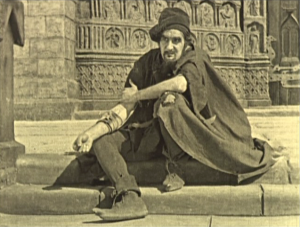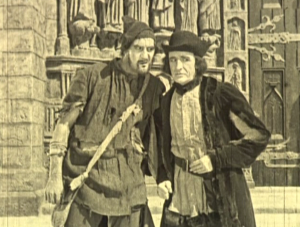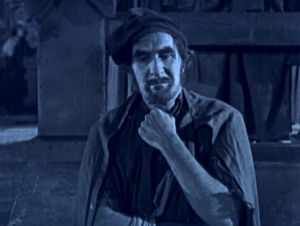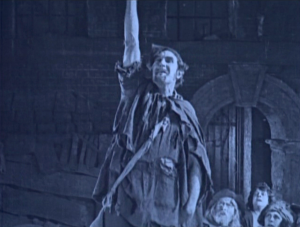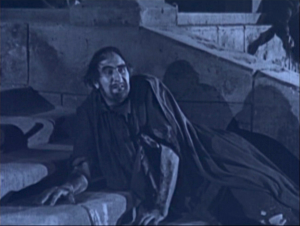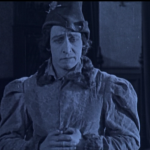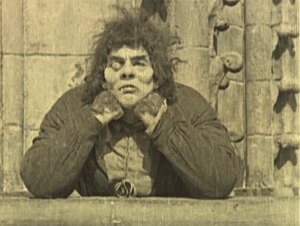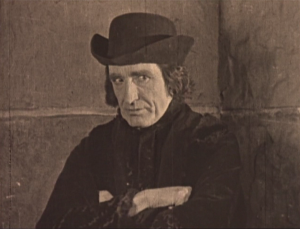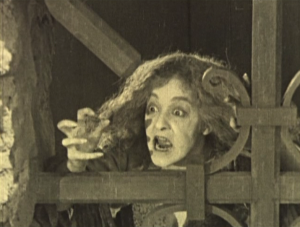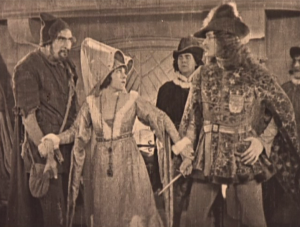Clopin is the most complex character in the 1923 version of Hunchback of Notre Dame. He’s conniving yet caring. In this version like in most every other version, Clopin is merged with the Duke of Egypt, one of the leaders of the Court of Miracles, leader of the Esmeralda’s group, and Esmeralda’s protector. In in role as the Duke, Clopin is Esmeralda’s adopted father. She is the only person that can soften his heart.
Clopin in the version also has a partnership with Jehan. The nature of their friendship is never explain. Jehan tries to get Clopin mobilizes the Court of Miracle against the nobles and Jehan try to tempt Clopin with gold of Notre Dame in exchange for Esmeralda. The basis for their interaction could be taken from the La Esmeralda Opera Libretto that Hugo wrote in which Clopin works with Frollo and was the one to hide in the room when Esmeralda and Phoebus has their encounter. It could also be that Jehan does join the Court of Miracles in the book though he never interaction in Clopin. Or it could that it is mention in the book by Gringnoire that the Duke intends to sell Esmeralda to “gentlemen priest.”
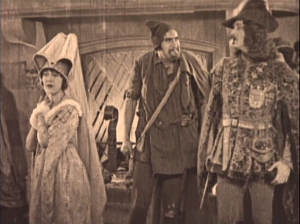
Clopin (Ernest Torrence), Esmeralda (Patsy Ruth Miller) & Phoebus (Norman Kerry) 1923 The Hunchback of Notre Dame
Clopin is also the one driving the social class sub-plot a.k.a the beggars vs the Nobles. It very similar to the 1939 version but in the 1939 version there were stakes, the nobel wanted Esmeralda out of Notre Dame here one noble just wants to marry. So basically it’s Clopin complaining and then getting mad when Esmeralda and Phoebus form a romantic attachment which for him is the ultimate insult.
It’s not wholly the films fault that this sub-plot doesn’t go very far. It’s actually because the copy that survives today is sixteen minutes shorter that the original. Most of these sixteen minutes were comprised of Clopin and one scene with Quasimodo gets clothes for Esmeralda, which is the scene where a prominent picture of Quasimodo was taken, so prominent in fact that it’s on the spine of the DVD. As result of Clopin’s role is much smaller than the film intended. However you can see some pictures and read the script in the Riley’s Book which is published with Pasty Ruth Miller’s Autobiography
, both of which are good reads if you a fan of the 1923 version or Miller’s or of old movies/Hollywood.
Clopin’s character suffers a lot from the cuts made to the film but even with the cuts is he the most complex characters in the film and he at least interesting and memorable.
Next Time – Gringoire

